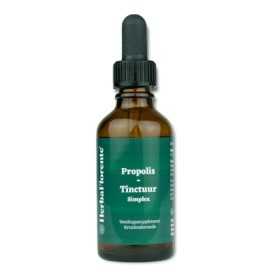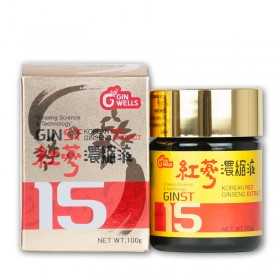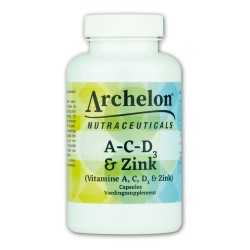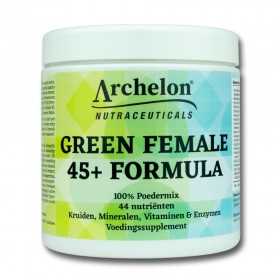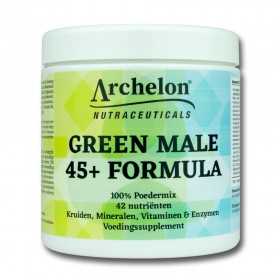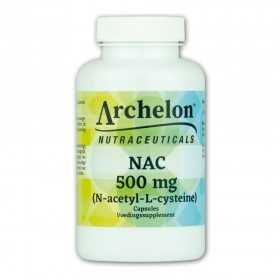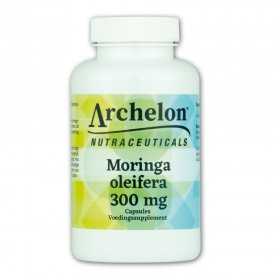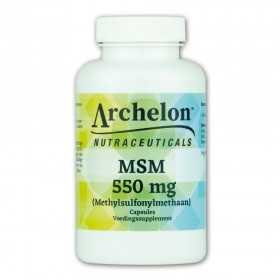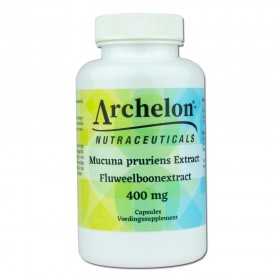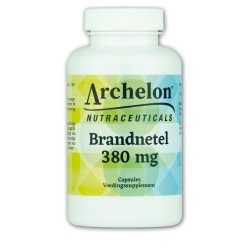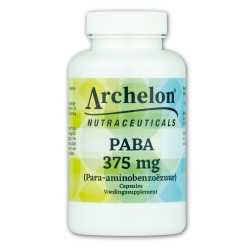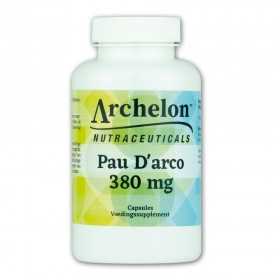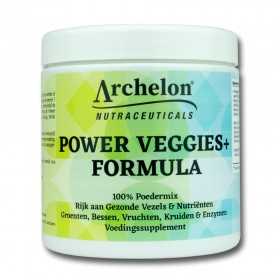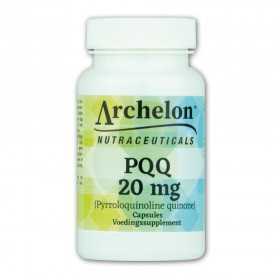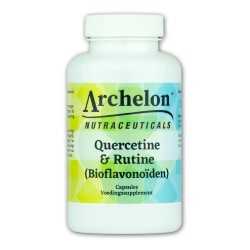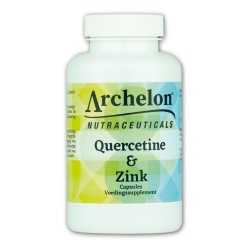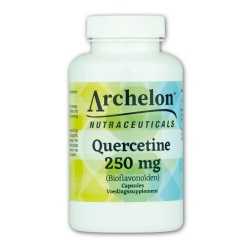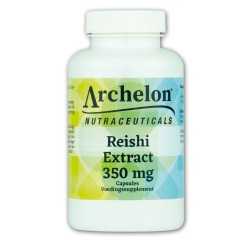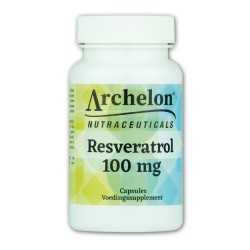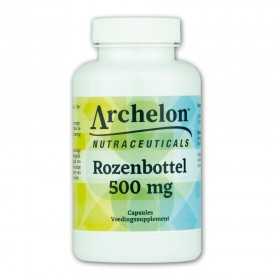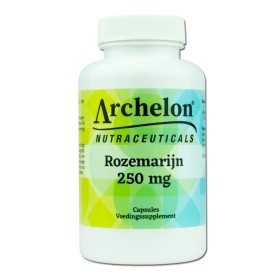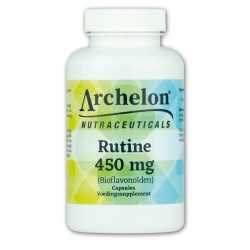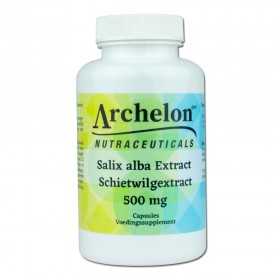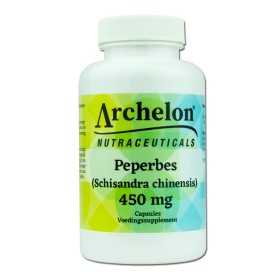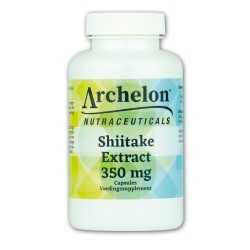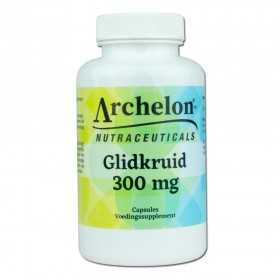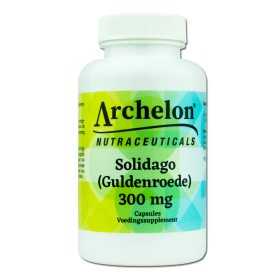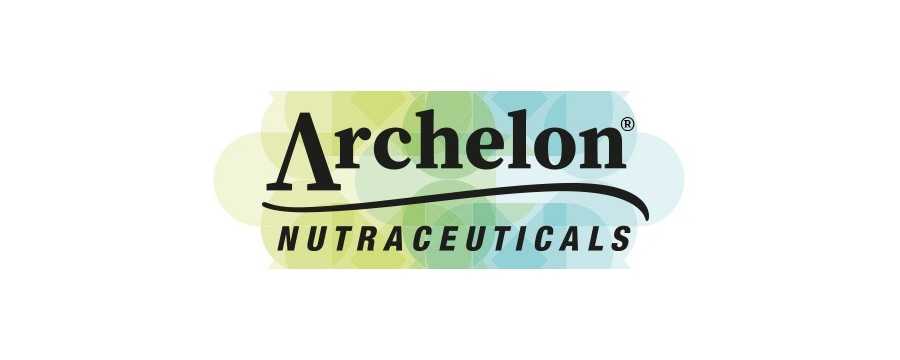
Archelon Nutraceuticals
There are 117 products.
Moringa oleifera - 300 mg
Moringa oleifera, also known as the 'tree of life', thrives in Africa and Asia and is known for its rich nutritional value. The tree is a treasure trove of more than dozens of nutrients, including no fewer than 47 antioxidants. Containing minerals, proteins, vitamins, beta-carotene, amino acids and various phenols in abundance, the leaves of the moringa are the true storehouse of nutritional value.
For centuries, Asian and African cultures have recognized the benefits of moringa oleifera. The tree has become an integral part of their daily diet due to its versatile uses and nutritional value. Because of its abundant benefits, moringa oleifera is often affectionately referred to as "the tree of life."
For centuries, Asian and African cultures have recognized the benefits of moringa oleifera. The tree has become an integral part of their daily diet due to its versatile uses and nutritional value. Because of its abundant benefits, moringa oleifera is often affectionately referred to as "the tree of life."
€19.95
MSM (Methylsulfonylmethane) - 550mg
MSM, full name methylsulfonylmethane, is an odorless, white crystalline powder that is soluble in water and is an important nutrient. It is an organic compound of sulfur that occurs both in our food and in our bodies. This compound, which naturally contains sulfur, plays an essential role in various body processes and is involved in the formation of more than 150 different substances.
The special thing about MSM is that it is a very easily absorbable form of sulfur. This compound contributes to the flexibility of the connections between cells, especially in tissues that naturally contain a lot of sulfur. Therefore, MSM can be beneficial for the hair, nails, joints, tendons, cartilage and ligaments.
The special thing about MSM is that it is a very easily absorbable form of sulfur. This compound contributes to the flexibility of the connections between cells, especially in tissues that naturally contain a lot of sulfur. Therefore, MSM can be beneficial for the hair, nails, joints, tendons, cartilage and ligaments.
€23.95
Mucuna pruriens Extract - Velvet Bean Extract - 400 mg
Mucuna pruriens, also known as the velvet bean, has been an essential part of traditional Ayurvedic medicine in India for thousands of years. This special plant not only supports the nervous system and helps maintain emotional balance, but is also a natural aid for both men and women for libido. In addition, Mucuna pruriens contributes to a healthy menstrual cycle and supports normal testosterone levels. With its powerful antioxidants, it also strengthens the immune system.
The Mucuna pruriens capsules are completely plant-based and therefore suitable for vegetarians and vegans. Discover the ancient Ayurvedic secrets and experience the powerful benefits of this unique bean for yourself!
The Mucuna pruriens capsules are completely plant-based and therefore suitable for vegetarians and vegans. Discover the ancient Ayurvedic secrets and experience the powerful benefits of this unique bean for yourself!
€29.95
NAC (N-Acetyl-L-Cysteine) - 500 mg
N-acetyl-cysteine (NAC) is a form of the sulfur-containing semi-essential amino acid L-cysteine. It is found in dairy, meat, fruit and vegetables, but this is often insufficient and can best be supplemented through supplementation. The advantage that N-acetyl-cysteine has over cysteine is that it is better and more easily absorbed by our body. Furthermore, N-acetyl-cysteine supports production of the important tripeptide glutathione in our body. Glutathione plays a role in protecting our cells against oxidative stress.
€24.95
Nettle - 380 mg
The nettle (Urtica dioica) is a powerful and versatile plant that occurs in many places, despite its irritating property to the touch. Known for its culinary uses, such as nettle soup and tea, the nettle is also known for its health benefits.
Originally from Africa and Asia, the plant goes by the Latin name Urtica dioica and has been used for centuries. In herbalism, not only the dried leaves, but also the dried roots are used.
Nettle leaf is a traditional herbal medicine with various applications. It contributes to healthy skin, gives shine to the hair and strengthens the nails. In addition, it can help soothe the respiratory tract and maintain proper fluid balance. It also provides support to the heart and blood vessels.
Originally from Africa and Asia, the plant goes by the Latin name Urtica dioica and has been used for centuries. In herbalism, not only the dried leaves, but also the dried roots are used.
Nettle leaf is a traditional herbal medicine with various applications. It contributes to healthy skin, gives shine to the hair and strengthens the nails. In addition, it can help soothe the respiratory tract and maintain proper fluid balance. It also provides support to the heart and blood vessels.
€17.95
PABA (Para-Aminobenzoic Acid) - 375 mg
PABA (Para-aminobenzoic acid) belongs to the vitamin B complex, it is a vitamin-like substance. PABA performs several important functions, including keeping the skin, hair, and nails healthy. In addition, PABA is involved in protein metabolism, red blood cell production and the functioning of the intestinal system. PABA occurs naturally in wheat germ, bran, yogurt and organ meats.
€22.95
Pau D'arco - 380 mg
Pau d'arco (Tabebuia avellanedae) is an imposing tree that thrives in the Amazon rainforest. The bark of the pau d'arco has been used for centuries in traditional herbal medicine for its diverse uses, including its supportive effects on the immune system.
The inner layer of the bark of Tabebuia avellanedae is packed with flavonoids, powerful antioxidants that protect our bodies against oxidative damage caused by free radicals. In addition, it contains a significant amount of quinones. More than 20 quinone compounds have already been discovered in the bark of the pau d'arco, such as lapachol and beta-lapachone. In addition, the bark contains substances that help defend against unfavorable bacteria and fungi.
The inner layer of the bark of Tabebuia avellanedae is packed with flavonoids, powerful antioxidants that protect our bodies against oxidative damage caused by free radicals. In addition, it contains a significant amount of quinones. More than 20 quinone compounds have already been discovered in the bark of the pau d'arco, such as lapachol and beta-lapachone. In addition, the bark contains substances that help defend against unfavorable bacteria and fungi.
€19.95
Phosphatidylcholine - 450 mg
Phosphatidylcholine is a concentrated form of lecithin, but is much more potent and has a longer shelf life than lecithin alone.
Phosphatidylcholine, derived from lecithin, is a source of choline, an essential nutrient recently recognized as a vitamin by the Dutch Health Council. Previously, choline was often referred to as vitamin B8, but it was not officially recognized as such.
It is an important component of cell membranes and plays a role as a pulmonary surfactant, mainly found in the outer leaflet of cell membranes.
Phosphatidylcholine is thought to be transported between cell membranes by the phosphatidylcholine transfer protein (PCTP).
Phosphatidylcholine, derived from lecithin, is a source of choline, an essential nutrient recently recognized as a vitamin by the Dutch Health Council. Previously, choline was often referred to as vitamin B8, but it was not officially recognized as such.
It is an important component of cell membranes and plays a role as a pulmonary surfactant, mainly found in the outer leaflet of cell membranes.
Phosphatidylcholine is thought to be transported between cell membranes by the phosphatidylcholine transfer protein (PCTP).
€39.95
Power Berries+ Formula
Our Power Berries+ Formula provides a balanced blend of nutrients specially formulated to support your overall health. This unique formula is packed with healthy fiber and essential nutrients, including polyphenols, phytonutrients, antioxidants and natural vitamins.
€57.50
Power Veggies+ Formula
Our Power Veggies+ Formula provides a balanced blend of essential nutrients to support your overall health. With an abundance of healthy fibers and nutrients, is Power Veggies+ Formula specially formulated to nourish and glow your body.
€59.50
PQQ (Pyrroloquinoline quinone) - 20 mg
PQQ, abbreviated for Pyrroloquinoline quinone, is a substance similar to a B vitamin and mainly found in plants. It is also sometimes called 'super Q10' because of its similar properties. Although PQQ has been around for a long time, it was only recently discovered. This water-soluble substance plays a role in enzymatic reactions and supports enzymes in their function. In addition, PQQ has various other properties.
A lot of research is currently being done into the exact composition and function of PQQ. This substance occurs naturally in various foods, such as spinach, kiwi, soy beans (especially green and fermented soy beans such as nattō), mustard and tofu. Green tea is also a rich source of PQQ.
A lot of research is currently being done into the exact composition and function of PQQ. This substance occurs naturally in various foods, such as spinach, kiwi, soy beans (especially green and fermented soy beans such as nattō), mustard and tofu. Green tea is also a rich source of PQQ.
€42.95
Quercetin & Rutin (Bioflavonoids)
Quercetin is a flavonoid, also called bioflavonoid. This natural plant compound is found in various plants, fruits and vegetables. Flavonoids are responsible for the vibrant colors (pigments) in these plants and come in various shades. They play a crucial role in plant metabolism, regulate growth, and provide protection against UV light, oxidation and heat.
Rutin, also known as a flavonoid or bioflavonoid, is a naturally occurring substance in vegetables, fruits, herbs and plants. It is known for its vibrant pigmentation and can have different colors. Rutin plays several important roles in plants, such as regulating growth, protecting against UV radiation, oxidation and heat, and maintaining plant metabolism.
Rutin, also known as a flavonoid or bioflavonoid, is a naturally occurring substance in vegetables, fruits, herbs and plants. It is known for its vibrant pigmentation and can have different colors. Rutin plays several important roles in plants, such as regulating growth, protecting against UV radiation, oxidation and heat, and maintaining plant metabolism.
€32.95
Quercetin & Zinc
Quercetin is a flavonoid, also called bioflavonoid. This natural plant compound is found in various plants, fruits and vegetables. Flavonoids are responsible for the vibrant colors (pigments) in these plants and come in various shades. They play a crucial role in plant metabolism, regulate growth, and provide protection against UV light, oxidation and heat.
Zinc is available in different forms. Zinc bisglycinate has a very good bioavailability. It is a chelated form of zinc bound to two (bis) molecules of the amino acid glycine which has more benefits for the body. Zinc has a very wide range of action and is involved in many body processes. Zinc is essential for the activity of more than 300 enzymes that have the zinc ion as a cofactor.
Zinc is available in different forms. Zinc bisglycinate has a very good bioavailability. It is a chelated form of zinc bound to two (bis) molecules of the amino acid glycine which has more benefits for the body. Zinc has a very wide range of action and is involved in many body processes. Zinc is essential for the activity of more than 300 enzymes that have the zinc ion as a cofactor.
€34.95
Quercetin - 250 mg
Quercetin is a flavonoid, also called bioflavonoid. This natural plant compound is found in various plants, fruits and vegetables. Flavonoids are responsible for the vibrant colors (pigments) in these plants and come in various shades. They play a crucial role in plant metabolism, regulate growth, and provide protection against UV light, oxidation and heat.
Quercetin belongs to a group of plant compounds known as flavonoids. Many flavonoids contribute to the coloring of plants to some extent. In addition, quercetin is a powerful antioxidant. It can be well combined with other antioxidant flavonoids, such as rutin and vitamin C, for an enhanced effect.
Quercetin belongs to a group of plant compounds known as flavonoids. Many flavonoids contribute to the coloring of plants to some extent. In addition, quercetin is a powerful antioxidant. It can be well combined with other antioxidant flavonoids, such as rutin and vitamin C, for an enhanced effect.
€27.95
Reishi Extract - 350 mg
Reishi (Ganoderma lucidum) has been considered one of the most important mushrooms in Japanese and Chinese herbalism for more than two thousand years. This mushroom supports the immune system and promotes healthy circulation.
Today, reishi mushrooms are grown in greenhouses under controlled conditions, which ensures a quality equivalent to that of wild reishi. Thanks to these cultivation methods, reishi is now widely accessible. The mushroom is rich in several nutrients, including iron, selenium, antioxidants, polysaccharides, peptides and triterpenoids.
Today, reishi mushrooms are grown in greenhouses under controlled conditions, which ensures a quality equivalent to that of wild reishi. Thanks to these cultivation methods, reishi is now widely accessible. The mushroom is rich in several nutrients, including iron, selenium, antioxidants, polysaccharides, peptides and triterpenoids.
€34.95
Resveratrol - 100 mg
Resveratrol is a naturally occurring substance in Japanese knotweed (Polygonum cuspidatum). It belongs to polyphenols, a group of organic molecules mainly found in vegetables, fruits, herbs and other plants. Polyphenols consist of different phenolic groups and include substances such as simple phenols, coumarins, flavonoids and anthocyanins. They play a crucial role in the metabolism of plants, protect the plant, regulate growth and provide protection against UV light, oxidation and heat.
Resveratrol has beneficial properties for protecting healthy cells and tissues in the body and is also good for the heart and blood vessels.
Resveratrol has beneficial properties for protecting healthy cells and tissues in the body and is also good for the heart and blood vessels.
€32.95
Rosehip - 500 mg
The dog rose (Rosa canina) is a native rose species in the Benelux, found in Europe, Northwest Africa and West Asia. This species has been introduced into North America.
After flowering, a rose hip develops, a fleshy flower base with nutty fruits inside. The rose hip is oval or ovoid, red-orange in color, and measures 1-2.5 cm long and 1-1.8 cm wide.
Rose hips are often used for making jam because of their high vitamin C content. They also contain carotene, vitamin B1 and vitamin B2.
After flowering, a rose hip develops, a fleshy flower base with nutty fruits inside. The rose hip is oval or ovoid, red-orange in color, and measures 1-2.5 cm long and 1-1.8 cm wide.
Rose hips are often used for making jam because of their high vitamin C content. They also contain carotene, vitamin B1 and vitamin B2.
€19.95
Rosemary - 250 mg
Rosemary (Rosmarinus officinalis L.) is a fragrant, compact shrub belonging to the Lamiaceae family. This versatile herb has been used for centuries for various purposes, both culinary and for health promotion. Originally from Mediterranean regions, the Rosmarinus officinalis displays lush blooms in spring with small, lavender blue flowers.
The name "rosemary" has its origins in the Latin "ros" (roris), meaning "dew", and "marinus", meaning "sea": "dew of the sea". Since ancient times, by both the ancient Greeks and Romans, Rosmarinus officinalis has been valued for its health-supporting properties. It helps with digestion, strengthens the immune system and contains antioxidants.
The name "rosemary" has its origins in the Latin "ros" (roris), meaning "dew", and "marinus", meaning "sea": "dew of the sea". Since ancient times, by both the ancient Greeks and Romans, Rosmarinus officinalis has been valued for its health-supporting properties. It helps with digestion, strengthens the immune system and contains antioxidants.
€19.95
Rutin - 450 mg
Rutin, also known as a flavonoid or bioflavonoid, is a naturally occurring substance in vegetables, fruits, herbs and plants. It is known for its vibrant pigmentation and can have different colors. Rutin plays several important roles in plants, such as regulating growth, protecting against UV radiation, oxidation and heat, and maintaining plant metabolism.
Citrus fruits are particularly rich in rutin, but other foods also contain this substance, such as grapes, the peels of apples, pears, apricots, raspberries, onions, asparagus, tobacco plants, tea, rhubarb, blueberries and elderberries. Rutin also acts as an antioxidant, meaning it protects our cells and tissues from oxidative damage caused by free radicals.
Citrus fruits are particularly rich in rutin, but other foods also contain this substance, such as grapes, the peels of apples, pears, apricots, raspberries, onions, asparagus, tobacco plants, tea, rhubarb, blueberries and elderberries. Rutin also acts as an antioxidant, meaning it protects our cells and tissues from oxidative damage caused by free radicals.
€29.95
Salix alba Extract - Willow Extract (Salicin) - 500 mg
Willow extract, derived from the bark of the white willow (Salix alba L.), naturally contains the valuable bioactive substance salicin. This extract is known for its supportive effect on supple muscles and joints.
The white willow (Salix alba L.), a common tree in the Netherlands, was examined in 1828 by the German pharmacist Johann Andreas Buchner. He discovered that the bark of the willow is rich in salicin, a special glycoside: a compound of a sugar with a non-sugar part, which only occurs in plants. Salicin supports joint function and contributes to the maintenance of supple muscles.
The white willow (Salix alba L.), a common tree in the Netherlands, was examined in 1828 by the German pharmacist Johann Andreas Buchner. He discovered that the bark of the willow is rich in salicin, a special glycoside: a compound of a sugar with a non-sugar part, which only occurs in plants. Salicin supports joint function and contributes to the maintenance of supple muscles.
€26.95
Schisandra chinensis - 450 mg
Schisandra, also known as the Schisandra berry (Schisandra chinensis), is known as one of the most important herbs in traditional Chinese medicine for promoting energy and vitality, and reducing stress. This dark red berry is rich in antioxidants, strengthens the immune system and promotes overall vitality. In addition, it provides protection and support to the liver and respiratory tract.
Schisandra has been used in traditional Chinese herbal medicine for over 2000 years. Only the berry with its seeds are used, harvested after the first frost and then dried in the sun. Schisandra is known as one of the most important herbs for promoting vitality.
Schisandra has been used in traditional Chinese herbal medicine for over 2000 years. Only the berry with its seeds are used, harvested after the first frost and then dried in the sun. Schisandra is known as one of the most important herbs for promoting vitality.
€28.95
Shiitake Extract - 350 mg
Shiitake (Lentinula edodes) has its origins in the Far East and plays an important role in traditional Chinese medicine. This mushroom is extremely versatile thanks to its rich range of nutrients. It is, among other things, a good source of B vitamins, vitamin C, potassium, magnesium, phosphorus, fiber and proteins. Compared to mushrooms, shiitake contains 15 times more vitamin B6, 4 times more potassium and 10 times more magnesium. The phosphorus content is even twice as high.
Shiitake (Lentinula edodes) is a fast-growing, fleshy mushroom with a cap that varies from golden to dark brown. In Asian countries and Russia, mushrooms have been prized as popular dietary supplements for centuries, with shiitake being one of the favorites.
Shiitake (Lentinula edodes) is a fast-growing, fleshy mushroom with a cap that varies from golden to dark brown. In Asian countries and Russia, mushrooms have been prized as popular dietary supplements for centuries, with shiitake being one of the favorites.
€34.95
Skullcap - 300 mg
Skullcap (Scutellaria) is a versatile genus of both annual and perennial plants, belonging to the Lamiaceae family. The genus includes about two hundred species, all of which are characterized by their characteristic, calyx-shaped flowers. These flowers are distinguished by clearly visible upper and lower lips. The name "Scutellaria" is derived from the Latin word "scutella", which means "small shield" or "saucer", and refers to the shape of the calyx.
€21.95
Solidago (Goldenrod) - 300 mg
Solidago virgaurea, also known as Goldenrod or Goldenrod, is a native plant that traditionally grows in Europe and Asia. In earlier times, this golden yellow flower was a permanent part of the Dutch herb garden. The yellow flowers were traditionally dried on a large scale and ground into a base for paint.
Solidago supports the kidneys and their function. It can be used for discomfort prior to menstruation and menopausal symptoms. In addition, solidago helps keep the joints flexible, strengthens resistance and contributes to good mental balance.
Solidago supports the kidneys and their function. It can be used for discomfort prior to menstruation and menopausal symptoms. In addition, solidago helps keep the joints flexible, strengthens resistance and contributes to good mental balance.
€19.95

